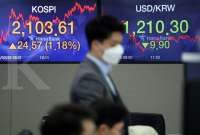JAKARTA. Domestic drug manufacturers are confident they will see a 12 percent growth in sales this year supported by growing demand for medicine following the implementation of universal health insurance in the country.
They believe business will surpass last year’s level of 7.6 percent growth in sales — lower than expected.
“We expect sales growth to increase by between 10 and 12 percent this year to US$6 billion, from around $5.3 billion to 5.4 billion last year,” said Kendrariadi Suhanda, deputy secretary general at Indonesian Pharmaceutical Association (GP Farmasi).
Kendrariadi, also the chairman of the Pharma Materials Management Club (PMMC), said the industry posted 7.6 percent sales growth last year due to the launch of universal health insurance under the Health Care and Social Security Agency (BPJS Kesehatan).
The insurance has pushed the price of medicine down, as the government has expanded health coverage. It introduced national health insurance (JKN) early last year through universal insurance coverage from BPJS Kesehatan.
On the other hand, the introduction of BPJS Kesehatan had impacted positively on the pharmaceutical industry, increasing demand for medicine, Kendrariadi added.
Aside from that, Kendrariadi, also a director at pharmaceutical firm Actavis Indonesia, said the rupiah’s depreciation had affected the industry last year and he predicted this dynamic would continue
this year.
According to Kendrariadi, the rupiah’s depreciation will affect the industry’s price calculations for imported raw materials, even though the impacts will vary for each company depending on their operations.
“The negative effect of a falling rupiah will mainly hit those who import large portions in short periods, while companies with stocks of materials of around three to four months will be relatively safe,” Kendrariadi said.
PMMC deputy chairman Vincent Harijanto added that more than 90 percent of raw materials in Indonesia’s pharmacy industry were imported from China and India, as investments for the local manufacturing of raw pharmaceutical materials had been stagnant for the last 45 years.
To reduce the dependency on imported raw materials, Vincent said the government was expected to provide support for basic chemical manufacturing, which was essential to boost the domestic pharmaceutical industry, as well as provide incentives and simplify permits so that foreign and local investment could grow.
Vincent said further that the investment push was also required to prepare the domestic pharmaceutical industry to welcome the ASEAN Economic Community (AEC) as mentioned in the association’s pharmaceutical industry road map for 2015-2025.
According to him, the local pharmaceutical industry may need total investment of Rp 14 trillion (US$1.08 billion) to build several facilities to produce raw materials, based on the PMMC’s calculations.
“Indonesia is actually doing quite well in producing the intermediate-types of materials needed to manufacture drugs, such as raw materials for Paracetamol. However, we are fully dependant on imports for ready-to-use raw materials,” Vincent added.
As part of efforts to boost the local industry, the association has endorsed the Convention on Pharmaceutical Ingredients in Southeast Asia (CPhI SEA), which will be held by UBM Pameran Niaga on April 8-10 in Jakarta.
The exhibition will be joined by 260 participants from 25 countries to connect pharmaceutical supplies and demands.
During the event, CPhI SEA will also launch the Indonesia Pharmaceuticals 2015 report, which is research conducted by the international media agency Global Business Reports that predicts the country’s pharmaceutical industry growth until 2018.
“Indonesia’s pharmaceutical industry faced various challenges last year, but it will be better this year if [President] Joko [Jokowi] Widodo’s administration is committed to making improvements and attracting more foreign investors,” said Vanessa Acuna Chapela, Global Business Reports’ project director for the CPhI SEA 2015. (Grace D. Amianti)
/2014/06/20/2115958182p.jpg)








